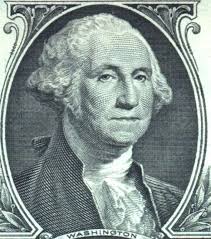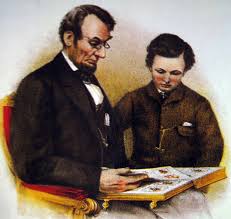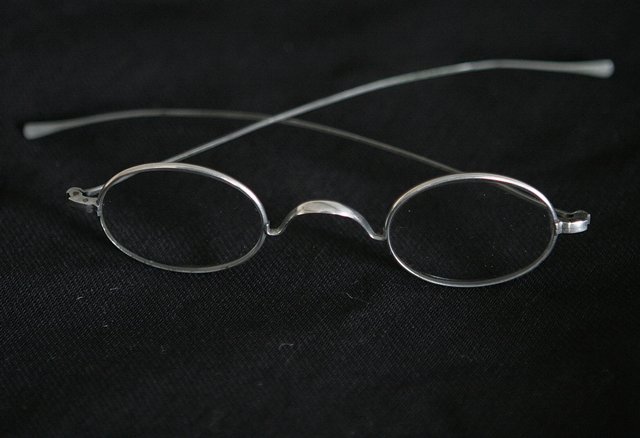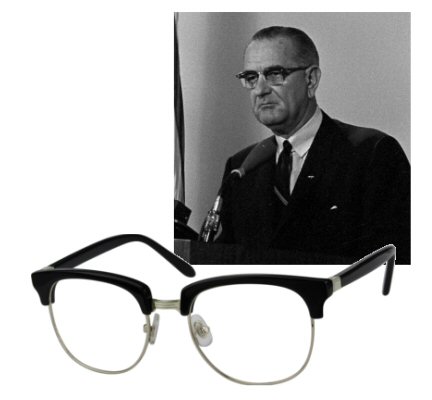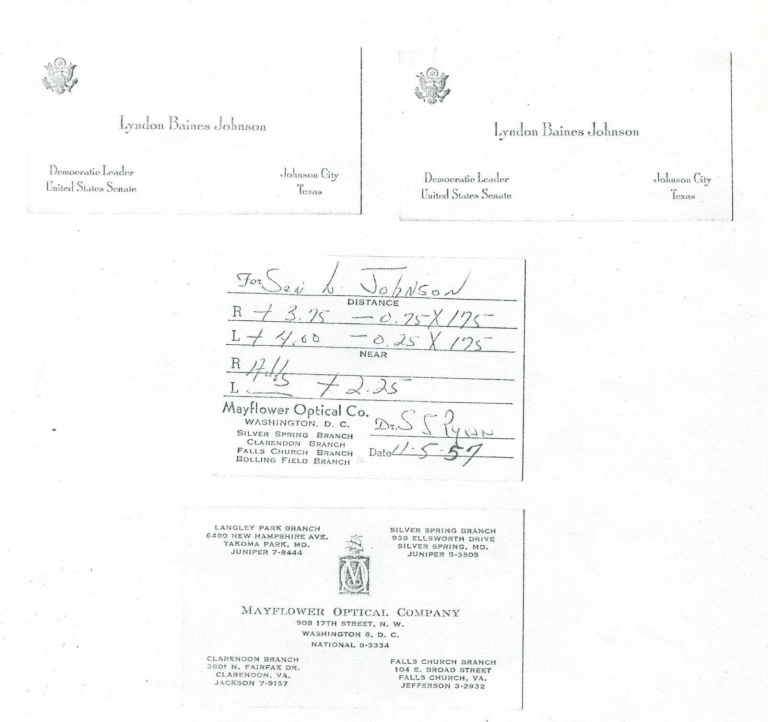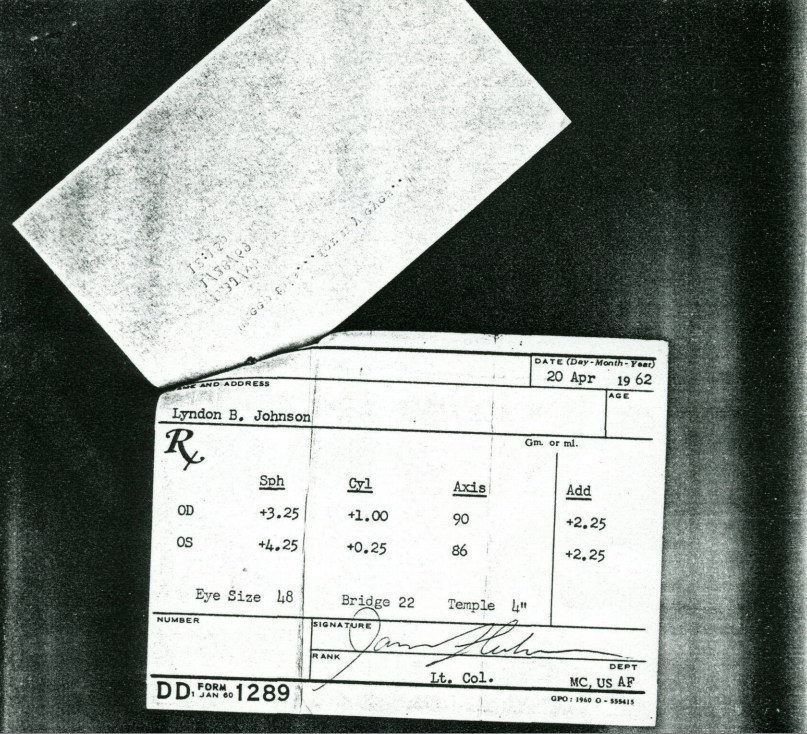Presidents Day: It’s All About the Glasses
- BY Zenni Optical
- IN Fashion
When did Presidents Day become all about white sales?
I mean, c’mon! What do towels and bedding have to do with George Washington, Abraham Lincoln, or any other president for that matter?
(All right, we know what you’re thinking, but please move along. There’s no Clinton joke to see here. There wasn’t any bedding, although towels may have been involved.)
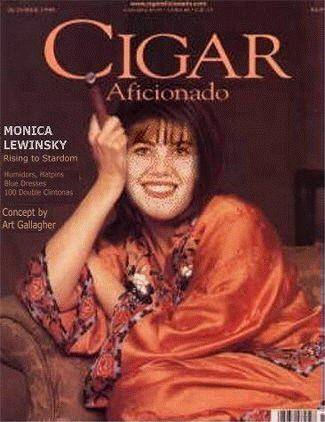
But hey, it’s time to move on! So toss that rumpled bed linen in the hamper, along with the stained blue dress, and let’s get serious.
To properly honor our presidents, instead of sheets and pillowcases, our last three-day weekend before the long drought until Memorial Day should be all about … glasses!
Yes, glasses. Work with us here.
Now we know that when you think POTUS (the acronym for President of the United States) you may not immediately think GOTPOTUS. (That’s glasses of the POTUS, not a parody of a milk commercial or a sign the rest of the country will soon follow Washington and Colorado.)
But you should. Eyeglasses have played an important role in the lives of many U.S. presidents. And in the case – literally, the eyeglasses case – of Theodore Roosevelt, a lifesaving role!
Roosevelt favored pince-nez (pronounced “ponce-NAY”) glasses, which perch right on the nose and are held in place with nose pads.
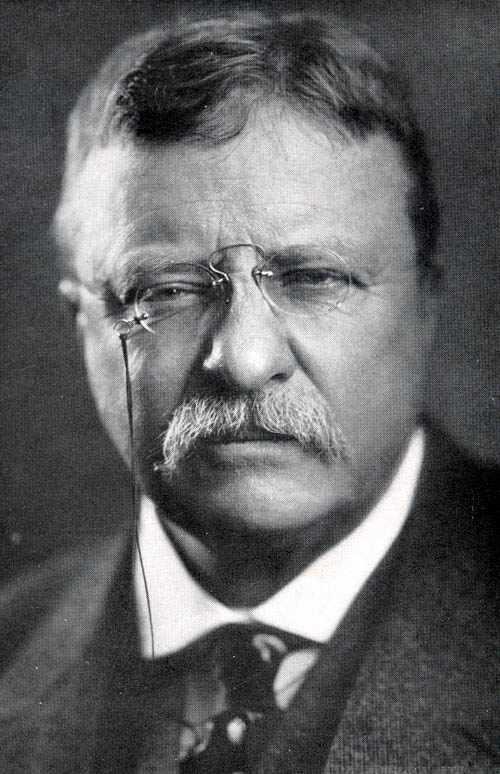
He was running as the Progressive Party candidate for president in 1912 after he failed to wrest the Republican nomination from his successor as president, William Howard Taft. Roosevelt was on his way to make a speech in Milwaukee when a would-be assassin shot him outside his hotel. Here he is, just before he was shot:
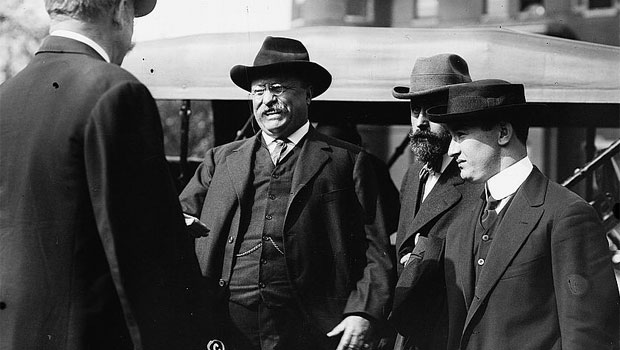
Although the bullet pierced Roosevelt’s skin and lodged against one of his ribs, its trajectory toward the former president’s heart was stopped by Roosevelt’s bulky overcoat, his folded lengthy speech, and (wait for it) his steel-reinforced eyeglasses case.
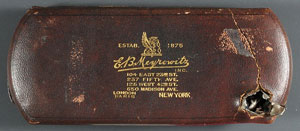
Was that sound we just heard the sound of you moving your eyeglasses case to your breast pocket? Don’t worry, you’re probably safe, unless you live in Florida.
Roosevelt, whose machismo was unimpeachable, was the first president to be photographed wearing glasses. He knew he wasn’t a namby-pamby, or if he secretly knew he was a namby-pamby, he made sure his well-publicized exploits indicated otherwise.
But most presidents, being politicians and as vain as actors – heck, they are actors! – have preferred not to be photographed (or painted) wearing eyeglasses.
That’s why you won’t see a pair of glasses anywhere on a dollar bill – not on Washington, not on the pyramid’s eye on the greenback, and certainly not on the eagle-eyed eagle. But our first president was also the first president to wear glasses, and he rocked them, in a frame of solid silver:
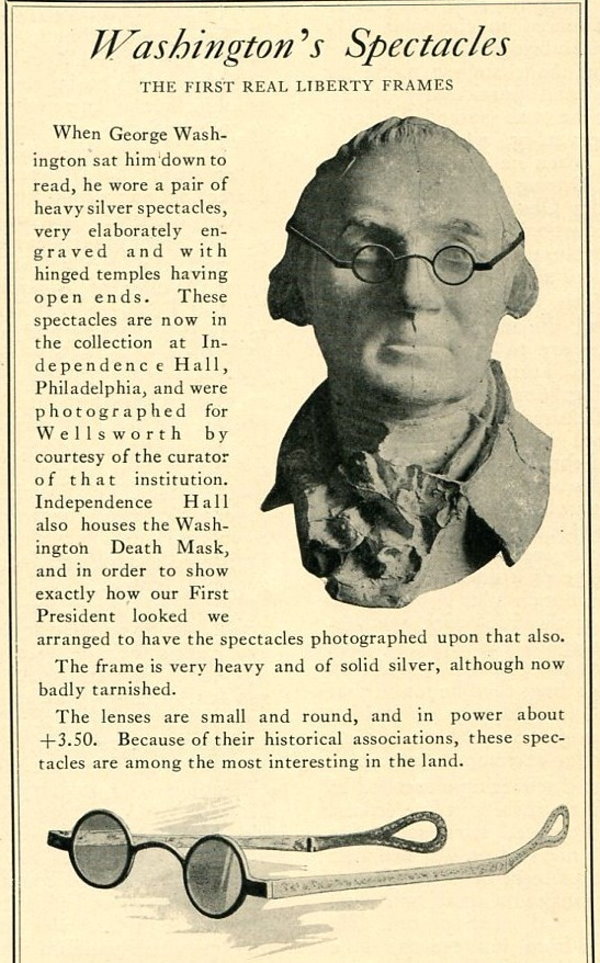
Washington also sometimes read with a lorgnette (French eyeglasses on a stick), a cherished gift from his Revolutionary War comrade the Marquis de Lafayette.
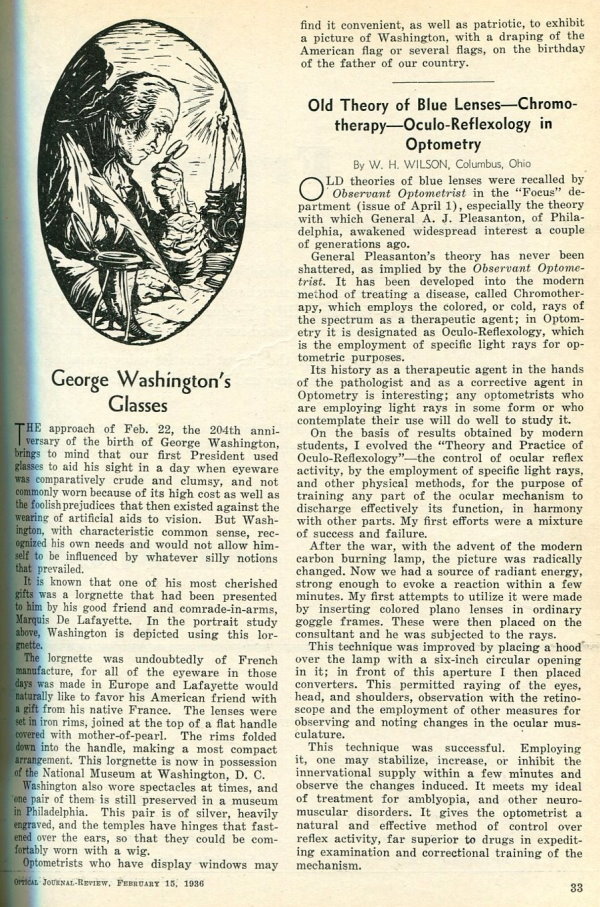
Washington’s prescription in his silver-frame glasses is +3.50, making them fairly strong reading glasses. He apparently did not favor bifocals as his non-president contemporary Benjamin Franklin did. Although the invention of bifocals is frequently attributed to Franklin, this claim has been plausibly debunked, as reported in our blog on the History of Eyeglasses.
Nevertheless, those Founding Fathers were a bunch of four-eyed geniuses.
Washington’s vice president and presidential successor, John Adams, was farsighted both politically (the Massachusetts Constitution he wrote became the model for the U.S. Constitution) and optically. He had basically the same prescription Washington did: +3.50 in his right eye, +3.59 in his left.
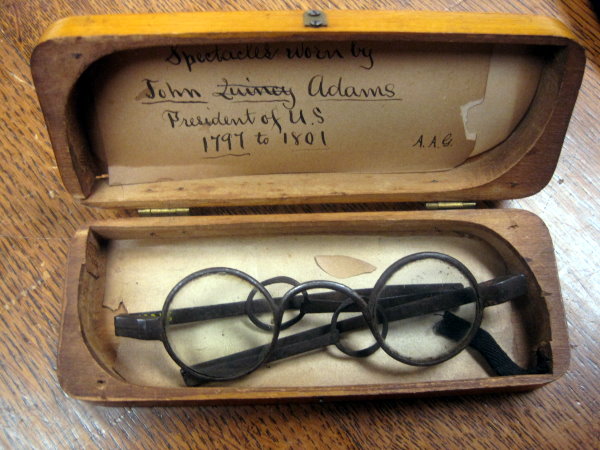
The history of presidential glasses goes fairly quiet until Lincoln, whose first purchase of eyeglasses has achieved the near-mythical status of Franklin’s bifocals. It’s been written that Lincoln bought his first pair of eyeglasses in 1856 in Bloomington, Illinois, for 37 ½ cents. (In today’s dollars, that would be around $10.00 – still more costly than the least expensive pair of Zennis!)
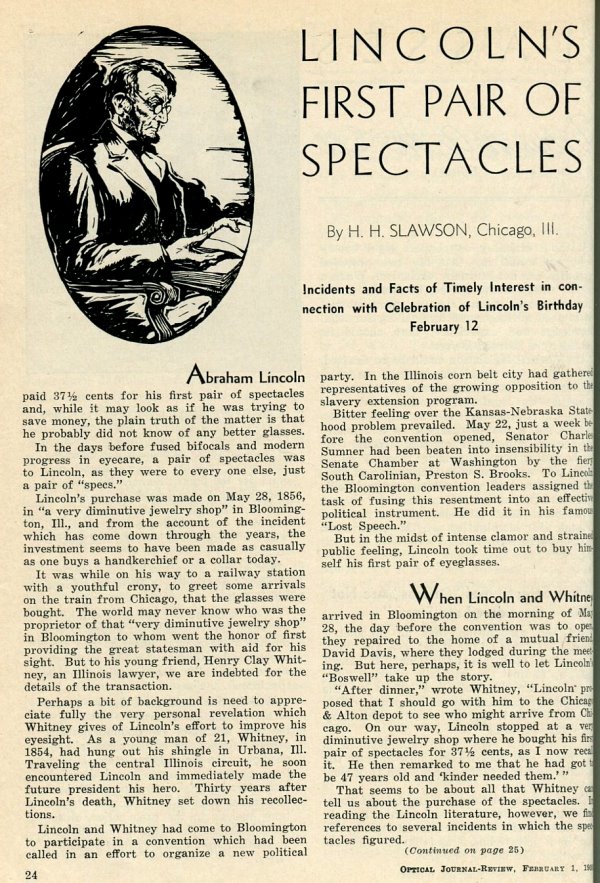
But scrupulous historians now believe that Lincoln’s first pair was purchased in the same state but in Springfield, in 1854. Two pairs of reading glasses confirmed to have been worn by Lincoln are in the Library of Congress. The first picture shows Lincoln wearing one of these pairs of glasses as he reads to his son Tad. The second shows the glasses he was wearing the night he made his ill-fated trip to Ford’s theater.
An example of Lincoln’s legendary wit – or at least whimsy – is reported in a story about one of his debates with senatorial opponent Stephen A. Douglas. Lincoln held up a copy of a speech Douglas gave the night before, disparaging Douglas’s remarks.
“Read it!” yelled a member of the audience. Lincoln replied:
“Gentlemen, reading from speeches is a very tedious business, particularly for an old man who has to put on spectacles, and more so if the man is so tall that he has to bend over to the light.”
The audience laughed, the newspapers reported the next day.
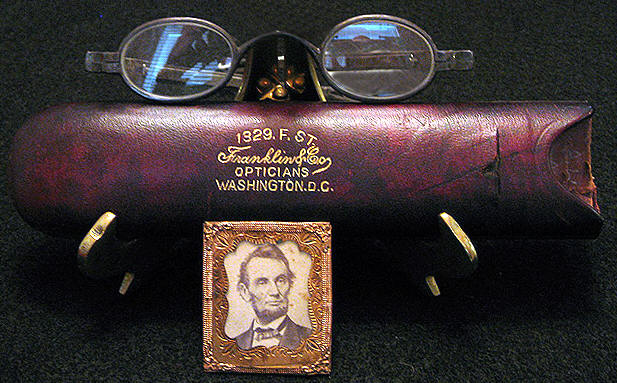
Early 20th century presidents, who wanted to display their technocrat cred, became more relaxed about being photographed in their glasses. Woodrow Wilson, formerly the president of Princeton, didn’t mind the egghead image his pince-nez glasses conveyed.
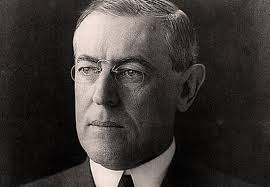
Herbert Hoover, who remained active in public life long after the last Hooverville shantytown gave way to Franklin Delano Roosevelt’s New Deal, appeared before the U.S. Senate in 1950 in a pair of glasses that would be considered a super cool geek-chic frame today:
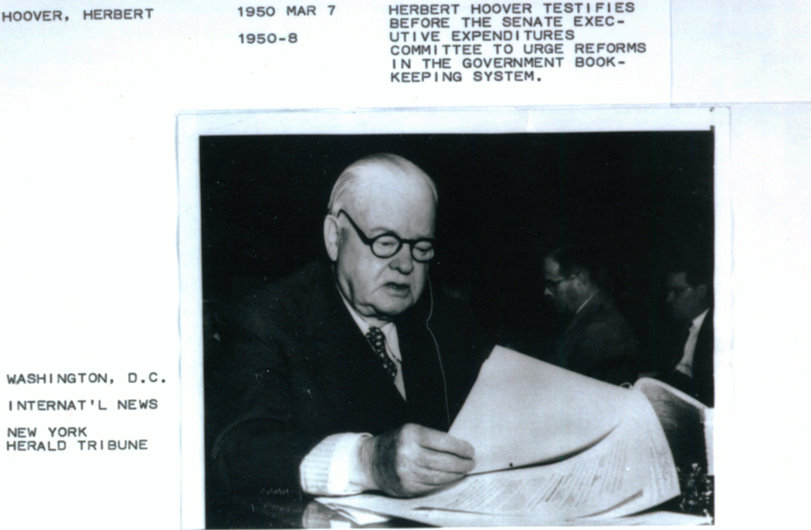
In addition to suffering from polio, FDR was nearsighted and started wearing glasses as an undergraduate at Harvard in 1900. One of the pairs he wore was in the pince-nez style, intended to emulate his cousin Theodore.
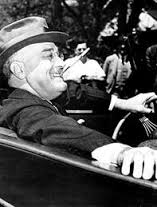
Roosevelt’s last vice president, Harry Truman, who became president when Roosevelt passed away in 1945, favored translucent full-rim plastic frames, which are very popular today.
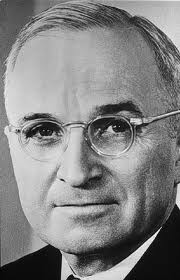
Truman had a strongly farsighted prescription. His glasses let him see up close, so he could easily tell where the buck stopped. When the buck stopped he could pick it up and put it in his pocket.
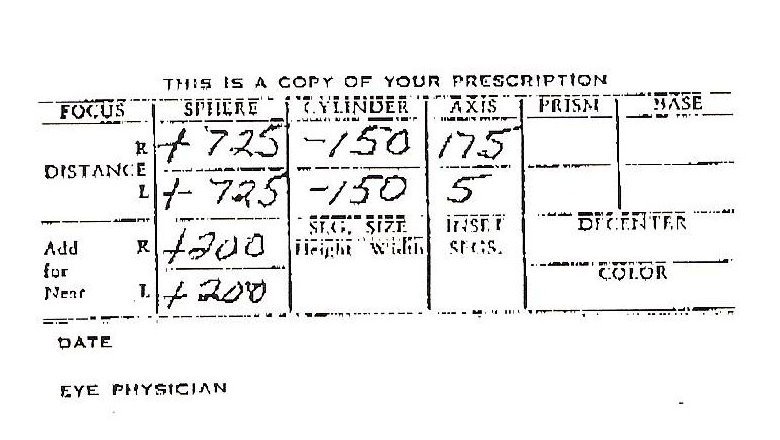
Dwight D. Eisenhower, who followed Truman into the White House, wore glasses although he was rarely photographed in them. When he was, you’d see him wearing the same style frame as Truman.
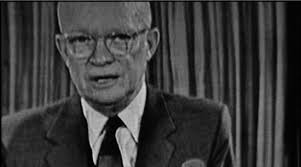
A poignant story emerges regarding Eisenhower’s successor, John F. Kennedy, who, with his wife, Jackie, brought a new sense of style to the presidency, no more so than in their choice of sunglasses.
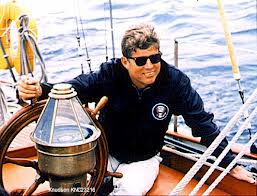
A letter written by the American Optical Company’s director of public relations and advertising, H.P. Brigham, dated Nov. 19, 1963, recounts a visit by an eye doctor to the White House to examine JFK’s eyes. After fitting the president with a pair of reading glasses, the optician who accompanied the eye doctor showed Kennedy a pair of bifocals with no correction on the top half of the lens and a mild +1.00 on the bottom.
Kennedy was so taken with these bifocals that the optician was called back to the White House the next morning and asked to produce a pair of these glasses before the president’s press conference that very day.
They cranked out the glasses in roughly an hour and a half and got them to Kennedy in time for his press conference. He liked them so much he called back and asked for three more pairs.
At the bottom of the letter describing these events, a note was scrawled: “The day I received this Kennedy was shot.”
Kennedy’s vice president, Lyndon Baines Johnson, was the last U.S. President, so far, who was frequently photographed in glasses. Not unlike the split between guns and butter LBJ was unable to bridge, he favored two different styles of glasses. He wore the presidential style favored by Truman and Eisenhower: full-rim plastic translucent glasses.
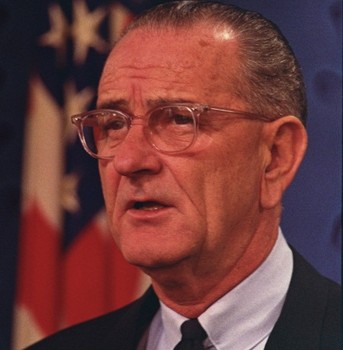
But he also wore the brow line style that was very popular in the 1960s and is popular again now in the 2010s. LBJ didn’t have much else in common with civil rights leader Malcolm X, but they both liked the same type of glasses.
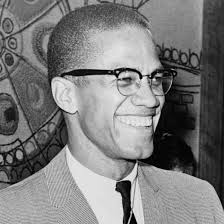
In the archives of the Johnson Library are two eyeglasses prescriptions for LBJ, one written in 1957, the other written in 1962. The two prescriptions are very close, but they represent a curiosity many eyeglasses wearers experience, when they see a prescription that calls for an astigmatism correction written with negative Cylinders (CYLs), as optometrists write it, and another one with positive CYLs, as ophthalmologists write it.
Whichever way you look at it, it still comes out the same.
Just like history.
